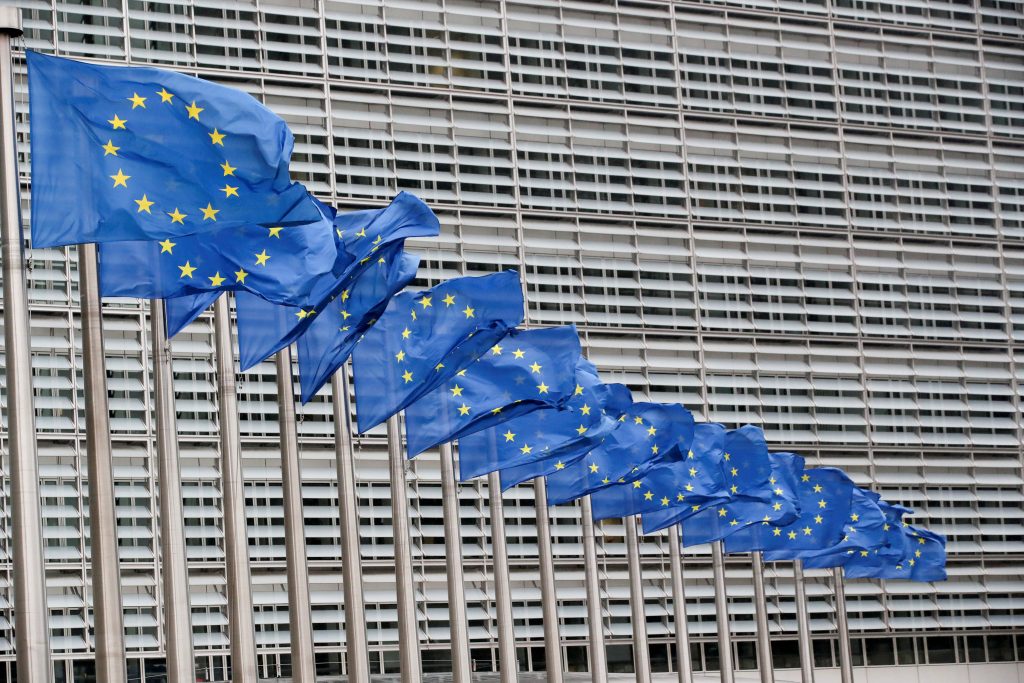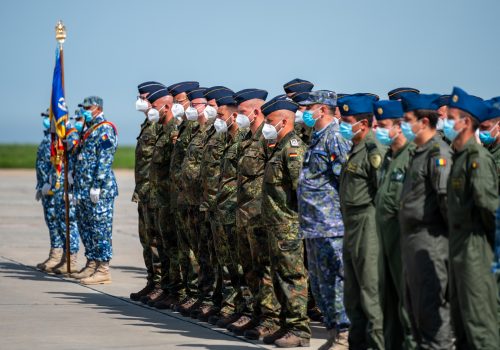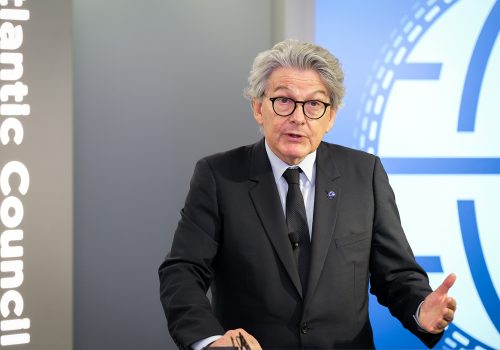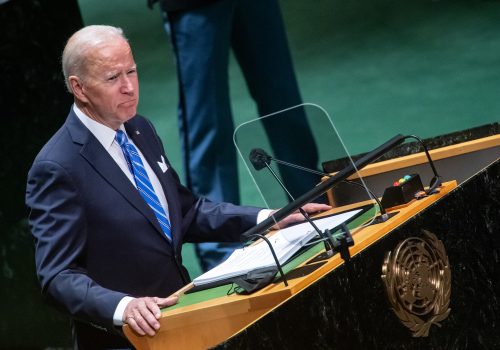As the first formal meeting of the US-EU Trade and Technology Council (TTC) gets underway on September 29, the key question should be: What will it take for the TTC to succeed? How can the TTC avoid the fate of so many official transatlantic councils and forums—from the Transatlantic Economic Council to the much-maligned Transatlantic Trade and Investment Partnership—that faded into irrelevance?
The reasons for those failures vary, from lack of interest by leaders to truly complex regulatory issues, such as pharmaceutical testing or the definition of subsidies. In most cases, these dialogues ended not with a bang, but with a whimper—no dramatic walkouts or explosive one-sided statements, but rather a simple failure to reconvene.
If the TTC is to avoid suffering the same form of negligent homicide, it must lay the groundwork for future success at Pittsburgh. The leaders will leave this first TTC either wondering why they bothered to attend, or enthusiastic about the work to be done and looking forward to their next encounter.
Announced at June’s US-EU summit, the TTC was a symbol of the restored commitment of the United States and the EU to their partnership. But it was also intended to demonstrate the interconnectedness of the two largest market economies in the world, as well as to serve as a forum for building greater cooperation across the Atlantic on regulatory and market issues.
Making the TTC a success story will not be easy. US President Joe Biden arrived in office determined to repair the transatlantic partnership, with a specific emphasis on building better relations with the European Union, but there have been few successes to date. The administration has not lifted Trump-era tariffs on steel and aluminum, nor have the United States and the EU resolved a dispute over data transfers. Moreover, the US failure to consult allies on its withdrawal from Afghanistan has left many European policymakers concerned that Biden’s “foreign policy for the middle class” is really just a rehash of former President Donald Trump’s “America First.”
As a result, Europe remains skeptical of the United States as a benevolent and predictable ally, and key European leaders talk openly about the need for strategic autonomy. In the final week before Pittsburgh, the AUKUS announcement caused a serious rift with France, leading European Internal Market Commissioner Thierry Breton to hint at doubts as to whether the TTC should go forward, as he believes US-EU relations might need a “pause and reset.”
Despite these challenges, the TTC presents the best opportunity to show that the United States and European Union can take concrete steps toward real cooperation on tech and trade and demonstrate that their relationship is based on meaningful partnership. Here are seven steps the TTC must take to achieve success:
- Commit to further engagement. Above all, the TTC must earn the commitment of the US and EU leadership to its future. The continuing engagement of the five co-chairs—European Commission Executive Vice-President Margrethe Vestager, European Commission Executive Vice-President Valdis Dombrovskis, US Secretary of State Antony Blinken, US Secretary of Commerce Gina Raimondo, and US Trade Representative Katherine Tai—will be essential if this is to be more than just a one-off meeting. One of the most important announcements in Pittsburgh could simply be the date and place of the next meeting. Hopefully, the incoming French presidency of the EU will step up to host the next session in the first half of 2022, despite the charged environment before Pittsburgh. Using the rotating presidency may even increase the commitment of EU member states to the TTC.
- Develop a shared vision of the TTC. US and EU leaders must leave Pittsburgh with confidence that they have developed a consistent and shared vision of what the TTC should be, and of its objectives and priorities. For the United States, this will mean giving up on the idea that the TTC is primarily a venue for rallying allies against China. For the Europeans, this will mean accepting that external views have some relevance for their current digital agenda. The EU has every right to regulate tech as it sees fit, but if there is nothing remaining to discuss, the US side will not find the TTC very useful. Similarly, if the United States simply wants to use the TTC against China, EU officials are unlikely to be eager for a return engagement.
- Identify the objectives of the TTC (hint: not dispute resolution). Is the TTC intended to resolve long-standing disputes, or to build cooperation in new areas? In recent months, the United States and EU have moved challenging disputes—Airbus-Boeing, data transfers, and steel and aluminum tariffs—to separate tracks where they can be the focus of expert negotiations. The leaders at the TTC can play a role in pushing negotiators to reach a deal and then blessing the results. But the leaders cannot dedicate sufficient time or focus to resolve disputes, especially those that have festered for some time. Instead, the strength of the TTC lies in its role as a vessel for US-EU cooperation. For that reason, the goal of the Pittsburgh meeting should be to build and demonstrate that cooperation.
- Launch serious efforts to develop shared standards and processes. This first TTC meeting should aim to launch a few specific efforts designed to build concrete collaboration. Early reports indicate that the Pittsburgh TTC will seek agreements on supply chains (especially semiconductors), investment screening, and export controls. Given that discussions about these topics only really began in the summer, this first TTC is likely to reach only very modest agreements even on these relatively uncontroversial topics. The leaders might promise to share more information on foreign-investment cases. They will undoubtedly make broad pledges to cooperate on building resilient supply chains and consult more on export controls. But to move beyond such vague promises, the TTC should launch a few efforts designed to develop joint approaches towards standards and processes; for example, joint cybersecurity standards, a shared approach to facial-recognition technology, or a shared methodology for evaluating mergers affecting the digital economy. As a first step, the United States and EU must first compare perspectives and policy approaches before trying to forge specific agreements. This is especially important given the significant mismatch in current EU and US policy positions: While the EU has spent the past year launching legislative proposals on a series of digital issues, the Biden administration is still struggling to get officials into their positions and develop a comprehensive approach.
- Establish a clear process linking the leaders to the TTC working groups. Reaching any of these objectives will take time and expertise. But the TTC is not just the leaders; the TTC working groups provide an invaluable setting for addressing detailed technical issues. The leaders should task the working groups with realistic but concrete goals, due before the next meeting. Too often, ministerial-level meetings lead only to vague pronouncements or to assignments that are neglected because officials assume the next meeting is a full year away (or even uncertain). By setting a schedule of at least twice-yearly meetings and assigning the working groups with developing concrete plans for collaboration, the TTC can begin to move the US-EU trade and technology agenda forward.
- Build effective stakeholder outreach, including with the US Congress and European Parliament. The TTC will only truly succeed if it develops a mechanism for effective stakeholder outreach. The European Parliament and US Congress must be consulted as legislators who can either support or impede the results of the TTC, especially those results requiring changes in laws and regulations. The European Commission and US executive branch are often unenthusiastic about including Parliament and Congress, but the TTC—in its second meeting, if not in Pittsburgh—should provide a platform for legislators to communicate their views to the leaders.
- Reach out to business and nongovernmental-organization (NGO) stakeholders. The TTC stakeholder process should reach beyond legislators to business and NGO representatives—critical components in any policy and regulatory process. Leaders must do more than simply report to the stakeholders after meeting; businesses and relevant NGOs should have some method of engaging with the working group process, especially since that is where many of the key technical choices will be made. There should also be a formal component to the leaders’ meeting that presents the views of business stakeholders and NGOs. The TTC should encourage stakeholders to reach across the Atlantic to develop initiatives that can be jointly proposed to the leaders.
The TTC is intended to address complex issues that affect economies and regulatory regimes on both sides of the Atlantic. Building cooperation on such issues will not be easy, even between allies and friends. This first meeting will inevitably face criticism for being more talk than action. But in Pittsburgh, the TTC has the chance to prove its critics wrong.
Frances G. Burwell is a distinguished fellow at the Atlantic Council and a senior director at McLarty Associates.
Image: European Union flags fly outside the EU Commission headquarters in Brussels on July 14, 2021. Photo by Yves Herman/Reuters



